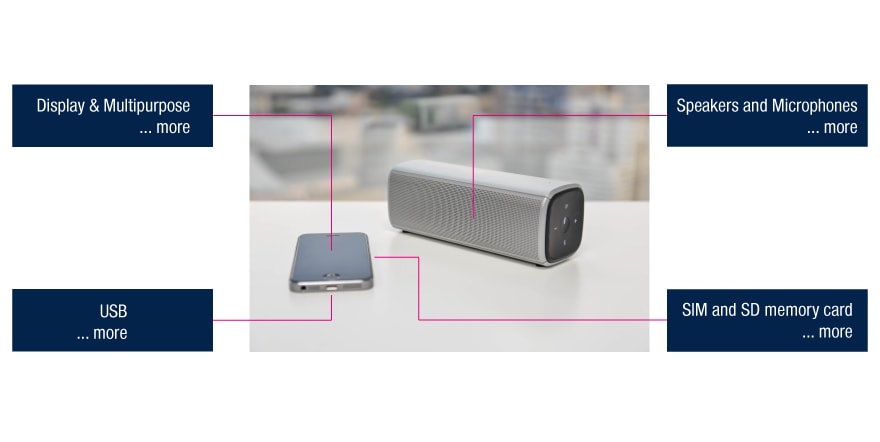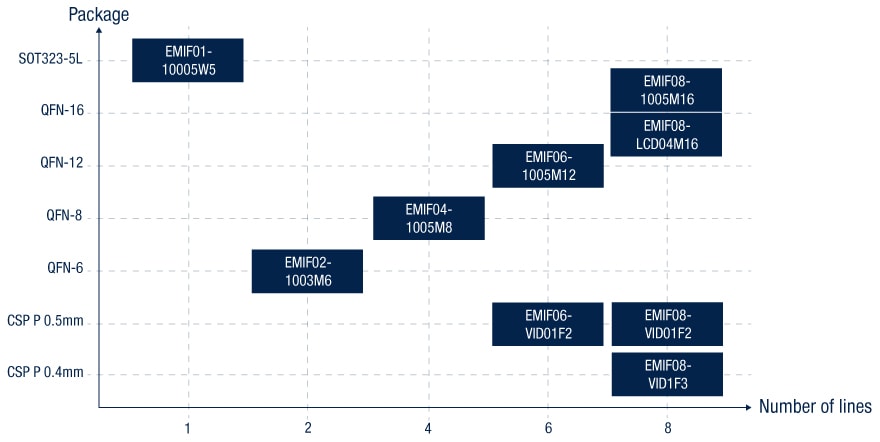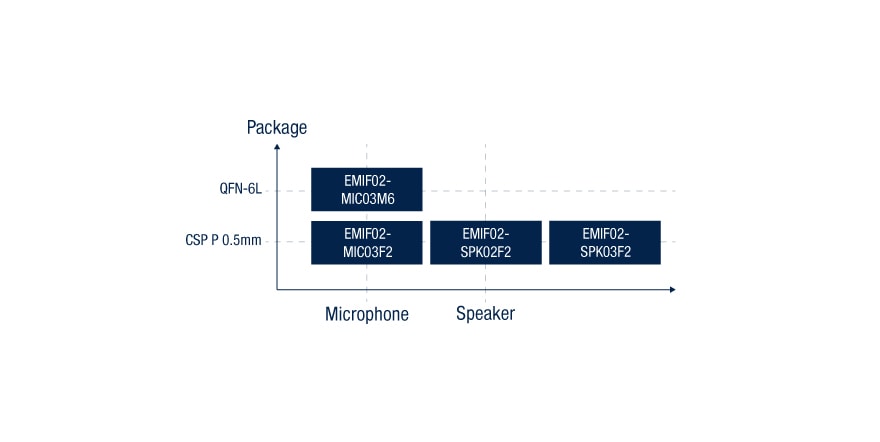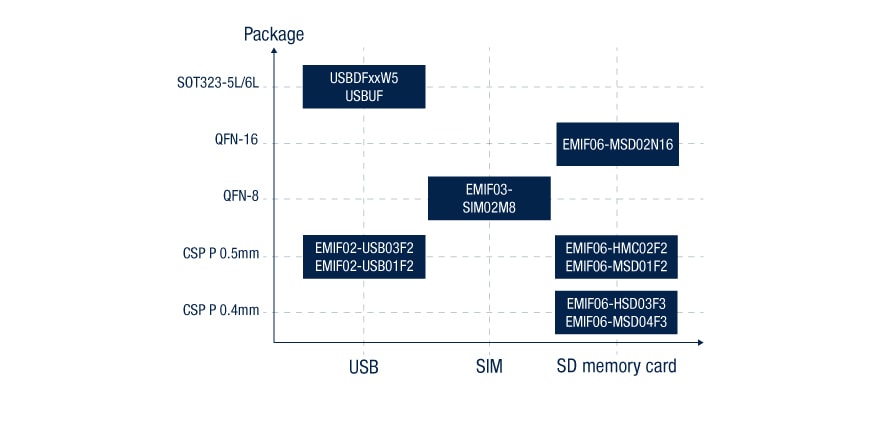
EMI filters are low-pass, band-pass, or high-pass filters combined with ESD protection diodes. They also integrate pull-up and/or pull-down resistors, depending on the application.
ST EMI filters with integrated ESD protections help protect data lines against ESD surges and remove EMI noise. They help designers ensure compliance with the 2014/30/EU directive and EN 55032 / CISPR 32* and EN 55035 / CISPR 35** technical standards.
*electromagnetic compatibility of multimedia equipment - emission requirements
**electromagnetic compatibility of multimedia equipment - immunity requirements
EMI filters applications
EMI filters target low-speed digital interfaces for analog applications, such as data lines in memory cards, USB low-speed or full-speed interfaces, microphones, speakers, displays, and multipurpose interfaces.

- Mobile phones
- Wearable
- Drones

- Mobile phones
- Wearable
- Industrial
- Computers
- Drones

- Mobile phones
- Wearable
- Computers

- Mobile phones
- Wearable
- Computers
- Industrial
- Weather Station
- Vaccum Cleaner Robots
How EMI filters work?
An EMI filter is an electrical component that suppresses electromagnetic noise in electronic equipment. It consists of a multiple-port network of passive components configured as a low-pass filter. It attenuates electromagnetic noise to tolerable levels while allowing the useful signals to flow through them with little or no attenuation. EMI filters only extract harmful frequencies that can produce electromagnetic noise from electric currents conducted through an electrical wire.
Types of EMI filters
There are various types of EMI filters with integrated ESD protections to address the following applications:
- speakers and microphones
- SIM and SD memory card interfaces
- USB interfaces
- displays or multipurpose applications
Our EMI filters feature R-C (for first order) or L-C (for second order) passive pi filters.
EMI filter usage and benefits
When compared with discrete solutions, the highly integrated ST EMI filters allow more compact PCB designs and wider frequency range rejection thanks to lower parasitic inductance. This ensures greater design flexibility when modifying PCB layouts. Unlike discrete solutions, integrated EMI filters do not modify the resonant frequency of the filter.

Display and multipurpose

Speakers and microphones

USB, SIM, and SD memory card

EMI filters with integrated ESD protections are primarily used for the following applications:
- low-speed digital interfaces for analog applications
- data lines in memory cards
- USB low-speed or full-speed interfaces
- microphones
- speakers
EMI filters offer the following benefits over discrete solutions:
- save PCB space
- greater protection against electrostatic discharges and EMI noise
- wider frequency range rejection thanks to a lower parasitic inductance
- more design flexibility
Featured Videos
During this one-hour webinar, you will learn how to make your electronic system more robust against destructive Electrostatic Discharges (ESD) by using ST ESD Protection components. Agenda : 1) ESD major root causes and EMC standards, 2) ST ESD Protections which can help to protect your application againts ESD, 3) Many real application examples demonstrating where protections play an important role, 4) How to select the best protection for your usecases
